Tree Trimming
14 Expenses to Expect in Professional Tree Transplantation
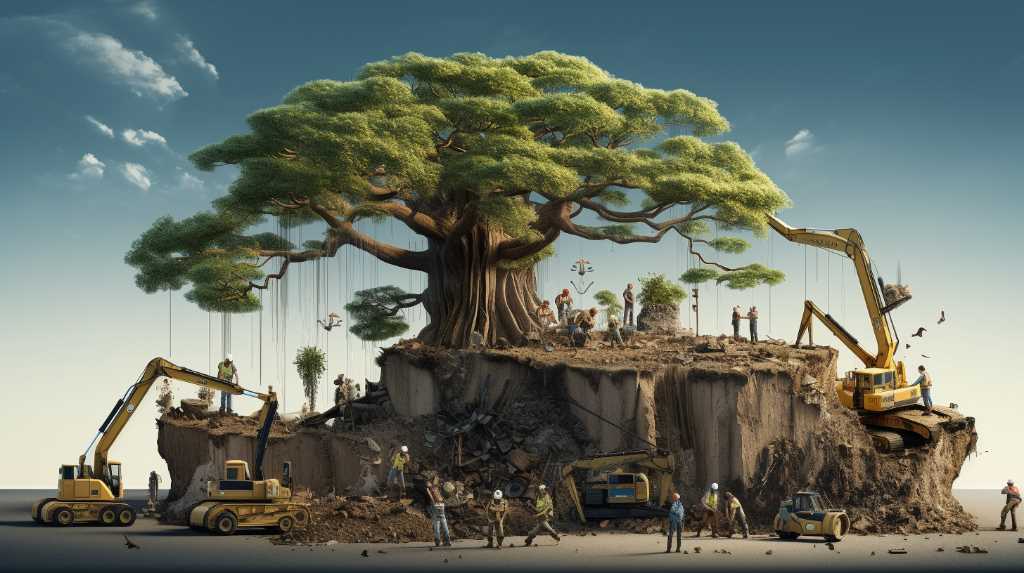

As a professional tree transplantation expert, I want to prepare you for the expenses you can expect in this process. It’s important to be aware of the costs involved in tree evaluation, site preparation, transportation, and maintenance. By understanding these expenses upfront, you can plan and budget accordingly.
In this article, I will outline the 14 expenses you should anticipate in professional tree transplantation, giving you the knowledge you need to make informed decisions and ensure the successful transplantation of your beloved trees.
Tree Evaluation and Consultation
During my professional tree transplantation process, I began with a thorough evaluation and consultation. This step is crucial in determining the feasibility and success of transplanting a tree.
I carefully examined the tree’s health, size, and root structure to assess its overall condition and the potential challenges we might face during the transplantation process. Additionally, I consulted with the property owner to understand their specific needs and expectations.
This collaborative approach ensures that both parties are on the same page and have a clear understanding of the desired outcome. By conducting a comprehensive evaluation and consultation, we can make informed decisions and develop a tailored plan for the tree’s successful transplantation.
Now that we’ve gathered all the necessary information, it’s time to move on to the next step of site preparation and clearing.
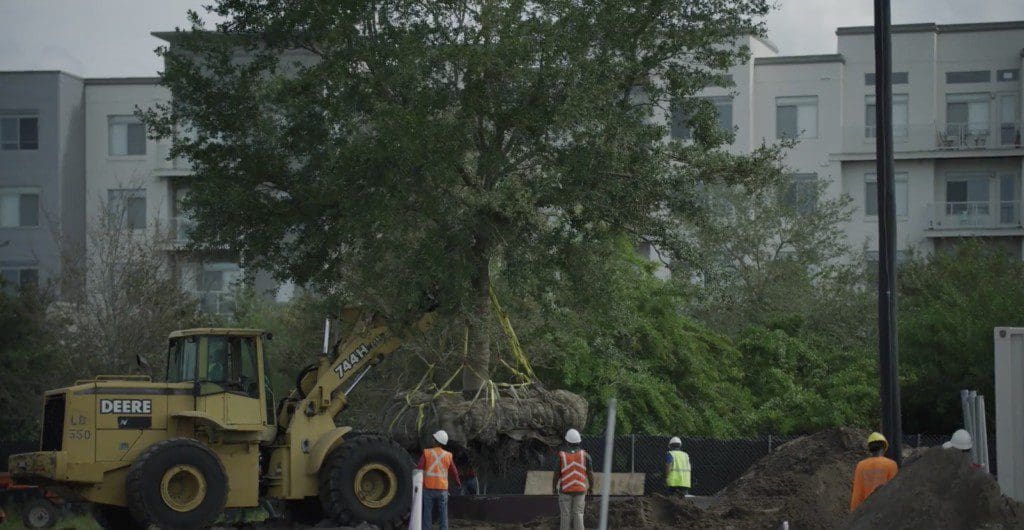

Site Preparation and Clearing
After completing the evaluation and consultation, I move on to site preparation and clearing, which is an essential step in the professional tree transplantation process.
Site preparation involves creating an optimal environment for the successful transplantation of the tree. This includes clearing the area of any obstacles, such as rocks, debris, or other vegetation that may hinder the process. It’s crucial to ensure that the site is adequately prepared to provide the tree with the best chance of survival.
Clearing the site also involves removing any underground utilities or structures that could potentially interfere with the tree’s root system. By taking the time to properly prepare and clear the site, we can ensure a smooth and successful tree transplantation process, providing the tree with the best possible conditions for growth and thriving.
Tree Digging and Root Balling
How do I dig and root ball a tree in professional tree transplantation?
Digging and root balling are crucial steps in the process of transplanting a tree. First, the tree is carefully excavated by creating a trench around its root zone. The depth of the trench should be determined by the size of the root ball needed. To ensure the tree’s survival, it’s important to minimize damage to the roots during this process.
Once the trench is complete, the tree is lifted using specialized equipment and placed onto a wire basket or burlap. The root ball is then wrapped tightly to secure the soil and roots. This technique helps maintain the tree’s stability and allows for successful transplantation.
It’s vital to handle the tree with care to prevent any harm to the roots and ensure its healthy growth in the new location.
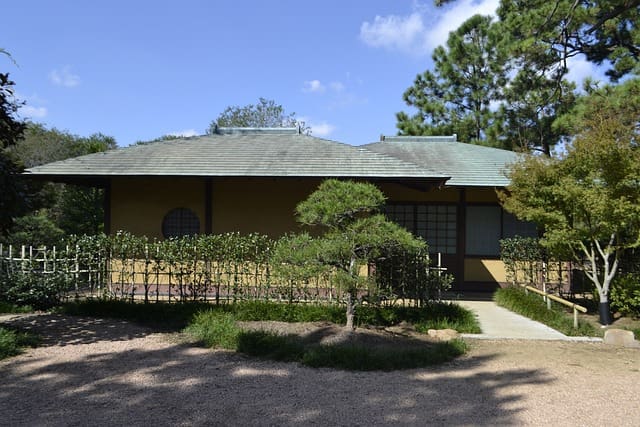

Tree Transportation and Delivery
One important expense in professional tree transplantation is the transportation and delivery of the tree to its new location. This process involves careful planning and specialized equipment to ensure the safe and efficient transfer of the tree.
Here are four key considerations for tree transportation and delivery:
- Proper packaging: The tree must be securely wrapped and packaged to protect it from damage during transportation.
- Specialized vehicles: Dedicated trucks or trailers equipped with appropriate support systems are used to transport trees safely.
- Route planning: The transportation team carefully selects the best route to avoid obstacles and ensure smooth delivery.
- Timing and weather conditions: It’s crucial to consider the optimal time for transportation, considering weather conditions that may impact the health and stability of the tree.
Crane or Equipment Rental
Renting a crane or equipment is a crucial expense in professional tree transplantation. When it comes to moving large trees, specialized machinery is necessary to ensure a safe and efficient process. The cost of renting a crane or equipment will depend on various factors such as the size of the tree, the distance it needs to be transported, and the duration of the rental.
Cranes are commonly used for lifting and moving heavy trees, while other equipment like tree spades and forklifts may be needed for smaller trees. It’s important to choose the right equipment that’s capable of handling the specific requirements of the tree transplantation project.
Renting these machines from reputable companies ensures that they’re well-maintained and operated by skilled professionals, reducing the risk of accidents and damage to the tree.
Tree Installation and Planting
I hired professionals to handle the tree installation and planting using specialized machinery. Here are four crucial aspects to consider when it comes to tree installation and planting:
- Site preparation: The professionals assessed the planting site to ensure it was suitable for the tree’s growth. They removed any obstacles, prepared the soil, and ensured proper drainage.
- Handling and transporting: The experts carefully transported the trees to the planting site using equipment designed to minimize stress on the roots. This ensured that the trees remained healthy during the process.
- Proper planting techniques: The professionals followed industry best practices to ensure the trees were planted correctly. They dug a hole wide enough to accommodate the tree’s root ball, positioned it at the appropriate depth, and backfilled it with soil to provide stability.
- Post-planting care: After planting, the experts provided essential care, including watering, mulching, and staking, to promote healthy root establishment and tree growth.
Tree Staking and Support Systems
To ensure stability and proper growth, I utilize tree staking and support systems during the transplantation process. These systems are essential for establishing the newly transplanted tree and protecting it from potential damage caused by wind, heavy rain, or other external factors.
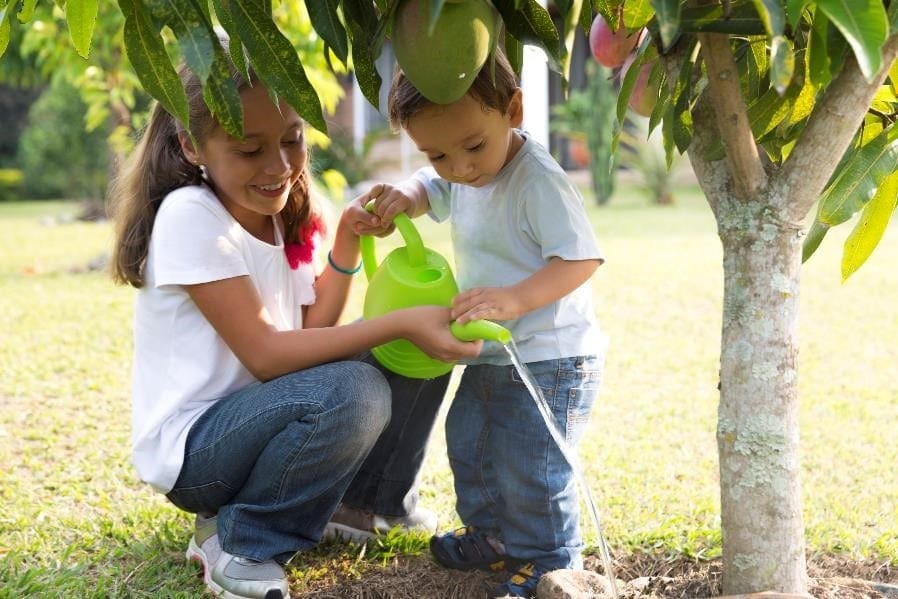

Tree staking involves the use of sturdy stakes that are driven into the ground beside the tree. These stakes provide support and help anchor the tree in its new location. They prevent the tree from leaning or falling over until its roots have had time to establish themselves in the soil.
Support systems, such as tree straps and ties, are also used to secure the tree to the stakes. These systems allow for flexibility and movement while still providing the necessary support. By preventing excessive movement, they promote proper root development and minimize stress on the tree.
Irrigation System Installation
An irrigation system installation is a necessary expense for ensuring the proper watering of transplanted trees. Here are four key reasons why investing in an irrigation system is crucial for the success of your tree transplantation project:
- Water efficiency: An irrigation system allows you to deliver water directly to the tree’s root zone, minimizing water waste and maximizing absorption.
- Consistent watering: With an irrigation system, you can set a regular watering schedule, ensuring that your transplanted trees receive a consistent water supply, even when you aren’t available.
- Automated control: Modern irrigation systems come with timers and sensors that adjust watering based on weather conditions, optimizing water usage and reducing the risk of over or under-watering.
- Tree health and growth: Proper irrigation ensures that transplanted trees receive the right amount of water, promoting healthy root development, reducing stress, and enhancing overall growth.
Installing an irrigation system is just the first step towards successful tree transplantation. The next section will discuss the importance of mulching and soil amendments in maintaining tree health and vitality.
Mulching and Soil Amendments
When it comes to professional tree transplantation, mulching and soil amendments play a crucial role in maintaining tree health and promoting successful establishment.
Mulching provides numerous benefits, such as conserving soil moisture, regulating soil temperature, and suppressing weed growth.
Soil amendments, on the other hand, improve soil fertility and structure, enhancing nutrient availability and root development.
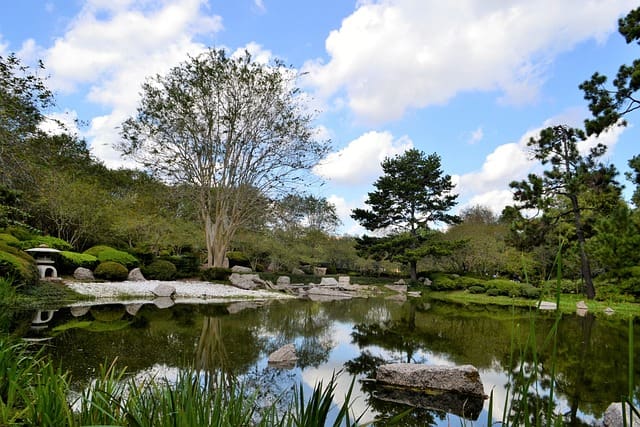

These practices are essential for ensuring the long-term health and vitality of transplanted trees.
Mulching for Tree Health
I use mulching as a key method for promoting tree health in professional tree transplantation. Mulching provides numerous benefits that contribute to the overall well-being of the transplanted tree. Here are four reasons why mulching is essential:
- Moisture retention: Mulch helps retain moisture in the soil, preventing the tree from drying out and reducing the need for frequent watering.
- Weed suppression: By forming a barrier over the soil, mulch reduces weed growth, minimizing competition for nutrients and water.
- Temperature moderation: Mulch acts as an insulator, protecting the tree’s roots from extreme temperatures, both hot and cold.
- Soil improvement: As mulch decomposes, it enriches the soil with organic matter, improving its structure and fertility.
By implementing mulching techniques, we can ensure the tree’s health and enhance its chances of successful transplantation.
Now, let’s explore the benefits of soil amendments in the next section.
Benefits of Soil Amendments
Continuing from the previous subtopic, implementing mulching techniques has proven to be essential in promoting tree health in professional tree transplantation.
Mulching involves applying a layer of organic material, such as wood chips or bark, around the base of the tree. This layer acts as a protective barrier, helping to conserve moisture, regulate soil temperature, and suppress weed growth. Additionally, mulching provides a slow release of nutrients as the organic material decomposes, enriching the soil and promoting root development.
These benefits contribute to the overall health and vitality of the transplanted tree, increasing its chances of successful establishment and growth.
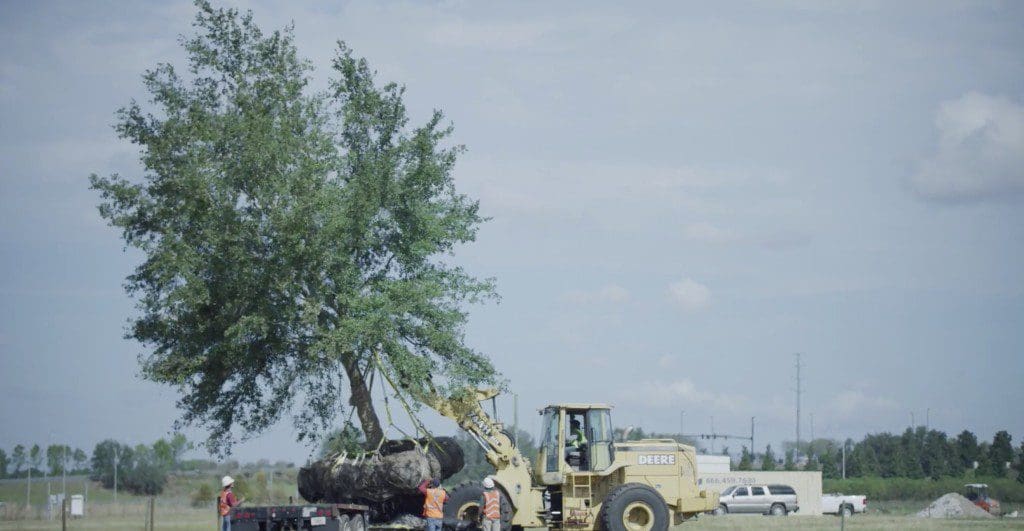

Furthermore, incorporating soil amendments, such as compost or peat moss, can enhance the soil’s fertility and structure, further supporting the tree’s health.
As we move into the next section on tree pruning and shaping, it’s important to consider the role of proper pruning techniques in maintaining tree health and structure.
Tree Pruning and Shaping
One important aspect of tree care is the pruning and shaping of the tree. Proper pruning and shaping techniques not only enhance the aesthetic appeal of the tree, but also promote its overall health and longevity.
Here are four key reasons why tree pruning and shaping are essential:
- Health: Pruning removes dead or diseased branches, preventing the spread of infection and improving the tree’s overall health.
- Safety: Trimming away weak or overhanging branches reduces the risk of falling limbs, protecting people and property from potential accidents.
- Structure: Shaping the tree helps maintain a balanced and desirable form, preventing irregular growth patterns and reducing the risk of branch breakage.
- Growth: Pruning stimulates new growth and encourages the development of a strong and robust tree structure.
Tree Health and Disease Management
As we delve into the topic of tree health and disease management, it’s important to understand the crucial role it plays in maintaining the overall well-being of our trees.
Tree health and disease management involves implementing strategies to prevent and manage diseases, pests, and other factors that can negatively impact the health of trees. Regular inspections are conducted to identify any signs of disease or stress, such as discoloration, leaf drop, or abnormal growth patterns. Once identified, appropriate measures are taken to address the issue, which may include pruning affected branches, applying pesticides or fungicides, or improving soil conditions.
By proactively managing tree health and addressing any issues promptly, we can ensure the longevity and vitality of our trees.
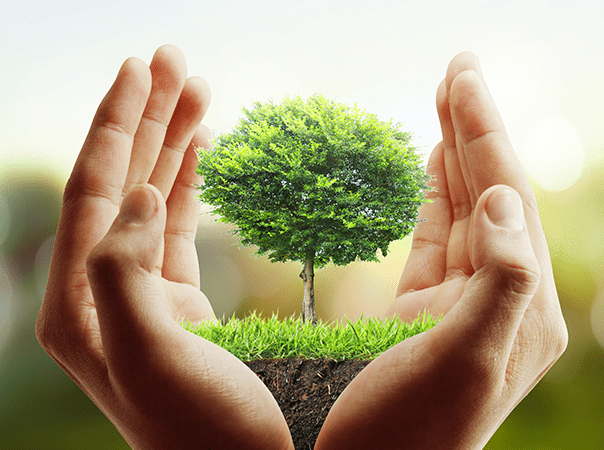

Now, let’s move on to the next section, which discusses tree fertilization and nutrient supplements.
Tree Fertilization and Nutrient Supplements
To ensure optimal growth and health, professional tree transplantation requires the use of appropriate tree fertilization and nutrient supplements. Proper tree fertilization plays a crucial role in supporting the tree’s overall health and ability to establish itself in a new location. Here are four key points to consider regarding tree fertilization and nutrient supplements:
- Nutrient Analysis: Conducting a soil test is essential to determine the specific nutrient requirements of the tree. This analysis helps identify any deficiencies and allows for targeted fertilization.
- Slow-release Fertilizers: Using slow-release fertilizers ensures a steady supply of nutrients over an extended period. This helps promote consistent growth and reduces the risk of nutrient leaching.
- Organic Amendments: Incorporating organic amendments, such as compost or mulch, improves soil structure, enhances nutrient availability, and supports beneficial microbial activity.
- Micronutrient Supplements: Some trees may require additional micronutrients for optimal growth. These supplements can be applied directly to the soil or foliar sprayed to address specific deficiencies.
Tree Maintenance and Monitoring
After addressing tree fertilization and nutrient supplements, the next crucial aspect in professional tree transplantation is the maintenance and monitoring of the trees. This step is essential to ensure the health and survival of the transplanted trees.
Tree maintenance involves regular pruning, watering, and mulching to promote proper growth and prevent disease or pest infestation. Monitoring the trees involves regular inspections to identify any signs of stress, such as wilting or discoloration, and taking necessary action promptly.
It also includes monitoring the soil moisture levels and adjusting watering schedules accordingly. Additionally, monitoring the trees allows professionals to track their progress and evaluate the success of the transplantation process.
Tree Warranty and Aftercare Services
When it comes to professional tree transplantation, it’s important to consider tree warranty and aftercare services.
Tree warranty coverage details should be clearly outlined, including the duration and extent of coverage.


Aftercare services are crucial in ensuring the health and survival of the transplanted tree, and should include regular inspections, watering, pruning, and pest control measures.
Warranty Coverage Details
I provide a comprehensive tree warranty that includes aftercare services for a specified duration. Here are the details of my warranty coverage:
- Duration: My tree warranty covers a specified duration, typically ranging from one to five years, depending on the specific tree species and transplanting conditions.
- Coverage: The warranty covers any issues that arise due to transplant shock, such as wilting, leaf drop, or stunted growth. It also includes protection against pest infestations and diseases that may affect the tree’s health and survival.
- Aftercare Services: As part of the warranty, I offer aftercare services, including regular inspections, watering, fertilization, and pruning, to ensure the tree’s optimal growth and health.
- Claim Process: In the event of any issues covered by the warranty, clients can easily file a claim, and I’ll promptly assess the situation and provide the necessary remedies.
By providing a comprehensive tree warranty with aftercare services, I aim to ensure the long-term success and thriving of the transplanted trees.
Now, let’s delve into the importance of aftercare in maintaining the health and vitality of the trees.
Importance of Aftercare
As part of the comprehensive tree warranty and aftercare services I provide, it’s crucial to emphasize the significance of ongoing care to ensure the long-term health and vitality of the transplanted trees.
After the transplantation process, the trees require specialized attention to help them adapt to their new environment and establish strong root systems.
Regular watering is essential to prevent dehydration and promote proper growth. Additionally, fertilization is necessary to provide the necessary nutrients for optimal development.
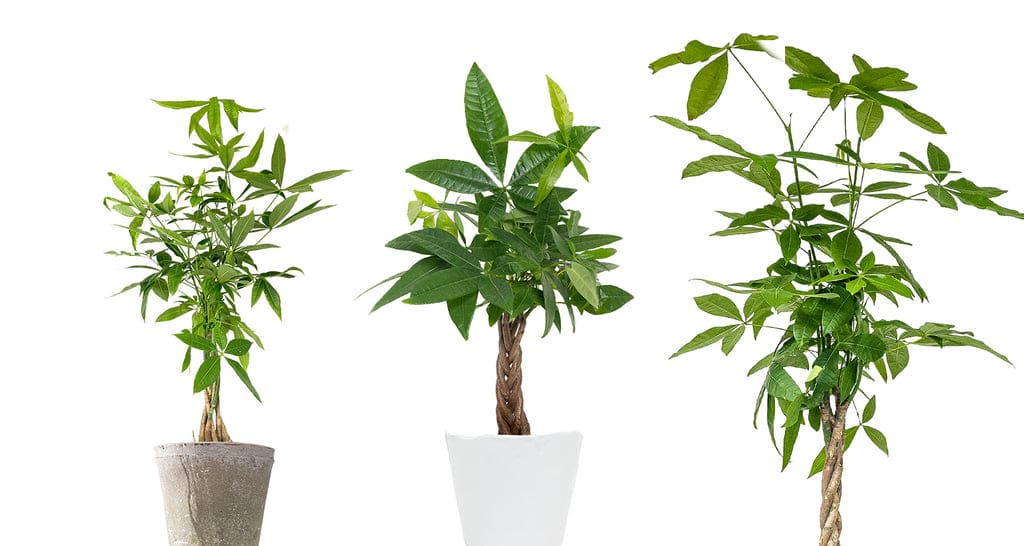

Pruning is another important aspect of aftercare, as it helps shape the tree and remove any damaged or diseased branches.
Monitoring for pests and diseases is also vital to address any issues promptly.


Hello there! I’m Logan Foster, the green-thumbed social media marketer behind the vibrant world of 1800TreeGuy.com. With roots firmly planted in arboriculture, I’ve branched out to help clients cultivate their dream outdoor spaces, one leafy canopy at a time. My knack for nurturing nature is more than a profession—it’s a way of life.
When I’m not talking trees and teaching the art of arboreal care, you can find me cheering on the Bulldogs—my alma mater’s pride and my forever team. My environmental studies there didn’t just teach me about ecosystems; they instilled a lifelong passion for protecting our planet.
Off the clock, I’m an adventurer at heart. Whether it’s trekking the Appalachian trails, pedaling down a mountain path, or crafting guides to share the wonders of the wild, I’m happiest with soil under my nails and the sun on my face. And let’s not forget Yoda, my pug sidekick. He may not have mastered the art of stillness, but his joyful grins are my daily dose of happiness.
I’m all about making connections—between people and the great outdoors and between my clients and their ideal landscape visions. My approach is personal; every tree has a story, and every garden reflects its caretaker.
If you want to green your scene or share in my outdoor escapades, give me a shout on Instagram or Facebook. Let’s cultivate a conversation and grow a community rooted in a love for the lush life.







